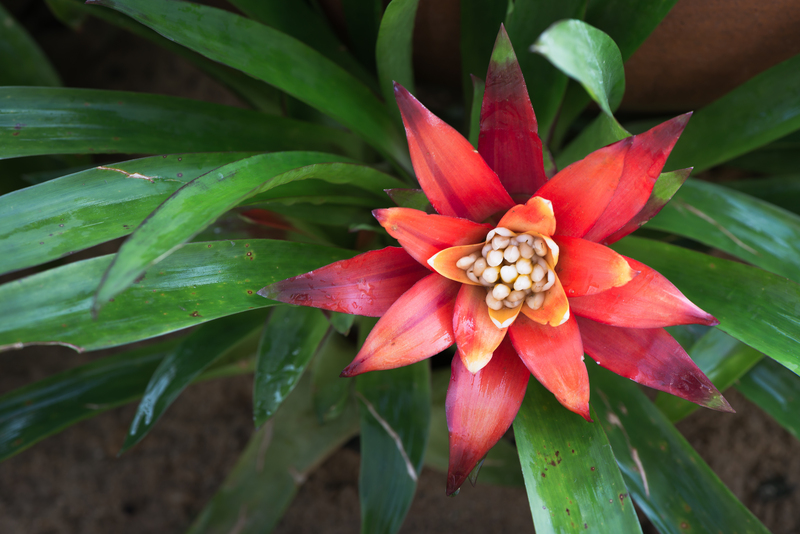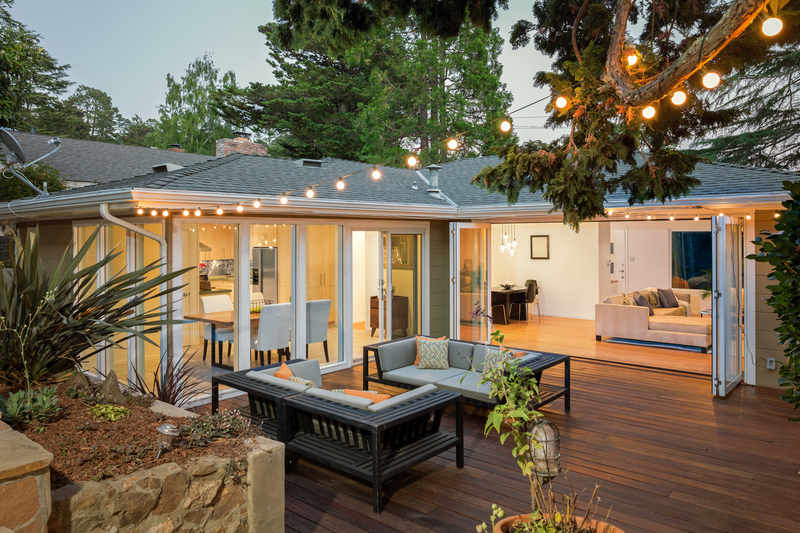Transform Your Garden into a Serene Zen Sanctuary
Posted on 22/08/2025
Transform Your Garden into a Serene Zen Sanctuary
Are you longing to escape the daily hustle and rediscover peace right in your backyard? Transforming your garden into a serene Zen sanctuary can provide a personal retreat where nature, calmness, and mindfulness unite. Whether you have a sprawling estate or a modest outdoor space, embracing Zen principles will help create a harmonious and tranquil haven.
What is a Zen Garden Sanctuary?
A Zen garden sanctuary--also known as a Japanese rock garden or Karesansui--is a space designed to promote relaxation, contemplation, and spiritual balance. Utilizing natural elements, controlled aesthetics, and simplicity, Zen gardens offer an inviting environment that fosters introspection and mindfulness.
- Tranquil atmosphere: Induces calm and reduces stress levels.
- Minimalist design: Avoids clutter, focusing on what is essential.
- Natural harmony: Uses rocks, water, and plants for a balanced look.
Below, discover how to expertly convert your backyard into a calming, Zen-inspired sanctuary filled with peace and beauty.

Essential Zen Garden Elements
1. Rocks and Stone Features
Rocks are the foundation of any authentic Zen sanctuary. They symbolize mountains and islands, echoing the solidity of nature and eternity.
- Placement: Arrange stones in odd numbers and asymmetrical patterns for a natural appearance.
- Types: Select different sizes and shapes--tall standing stones, flat stepping stones, and rounded boulders.
- Symbolism: Consider what each stone represents--mountains, islands, or animals--for deeper meaning.
2. Sand, Gravel, and Raked Patterns
Replacing grass with white sand or light-colored gravel brings purity and tranquility. Regularly raking patterns represents the metaphorical flow of water, offering mindfulness and meditation opportunities.
- Maintenance: Raking is meditative and encourages living in the moment.
- Design: Curling or straight lines can represent rivers, waves, or ripples in water.
3. Water Features for Soothing Sound
Water is a vital element in creating a peaceful garden sanctuary. Even if space doesn't permit a pond, a small fountain or bamboo water spout (shishi-odoshi) adds the gentle sound of running water, dissolving tension and masking urban noise.
- Ponds: Ideal for larger gardens to attract birds, koi, and add reflection.
- Fountains: Compact and suitable for smaller gardens, can be solar-powered for sustainability.
- Bamboo features: Traditional, subtle, and deeply Zen in style.
4. Carefully Chosen Plants
Plant selection in a Zen-inspired garden is purposeful and thoughtful. Every plant should promote tranquility, with low-maintenance evergreens and soft foliage taking center stage.
- Bamboo: Represents resilience and flexibility; use as a privacy screen or accent.
- Moss: Covers soil or rocks for a lush, natural green carpet.
- Japanese maple: Shimmering, delicate leaves provide seasonal interest.
- Ferns and ornamental grasses: Add texture and gentle movement.
- Blossoming plants: Use sparingly; cherry blossoms or azaleas for occasional color.
5. Pathways and Stepping Stones
Meandering stone pathways guide visitors thoughtfully through the garden, embodying the journey of life. Use natural materials and curve paths gently, discouraging hurried movement and encouraging mindfulness.
- Irregular layout: Authentic Zen gardens favor natural curves over straight lines.
- Gravel, stone, or wood: Use materials that blend seamlessly with your sanctuary's natural elements.
6. Garden Structures: Gates, Arbors, and Benches
Select understated, minimalist structures to reinforce a sense of welcome and enclosure.
- Torii gates or wooden arches: Symbolically mark the threshold to a sacred, peaceful space.
- Stone benches or bamboo seats: Provide places for meditation and reflection.
Resist loud, ornate pieces--a Zen sanctuary garden design is all about subtlety and simplicity.
Step-by-Step Guide to Creating Your Zen Sanctuary Garden
Step 1: Plan and Visualize Your Space
- Assess your garden: Take measurements, observe sunlight patterns, and note existing plants or features worth keeping.
- Create a scale drawing: Outline zones for rocks, gravel, water, paths, and plantings.
- Set a budget: Factor in the cost of materials, plants, and any professional help you may need.
Step 2: Prepare the Site
- Clear clutter: Remove unnecessary lawn furniture, toys, or unsightly utilities.
- Level uneven areas: Achieve a smooth, graded base for rocks and gravel.
- Install weed barrier: Under gravel or sand, this prevents unsightly growth.
Step 3: Arrange Stones and Build Features
- Place large stones first: These anchor the design and reflect natural landscapes.
- Add gravel or sand: Spread and rake to desired depth and texture.
- Build water features: Position away from overhanging trees to minimize debris.
Step 4: Plant Thoughtfully
- Start with structure: Evergreens and bamboo for year-round shape and privacy.
- Fill with ferns, moss, and groundcover: Prioritize slow-growing, shade-loving varieties.
- Add color sparingly: Consider the seasonal impact and avoid too many bright colors.
Step 5: Create Pathways and Install Seating
- Lay stepping stones or gravel: Ensure the path feels organic and meanders gently.
- Install benches or meditation spots: Tuck these into secluded nooks for privacy.
Step 6: Accessorize for Ambiance
- Lanterns: Add warm, subtle lighting with stone or bamboo lanterns.
- Wind chimes: Gentle, wooden or metal chimes add auditory tranquility.
- Art or statues: Choose a single Buddha, crane, or pagoda for focus--avoid overwhelming the space.
Maintenance Tips for Your Serene Zen Sanctuary
A Zen-style sanctuary garden is designed for ease, but regular maintenance preserves its peaceful aura:
- Rake gravel and sand: Recreate patterns and remove debris.
- Prune selectively: Maintain a natural form--aim for gentle shaping, not strict topiaries.
- Control weeds: Spot-weed manually for minimal chemical use.
- Check water features: Clean filters and check pumps for optimum, silent operation.
- Refresh mulch and moss: Add a new layer yearly to retain moisture and prevent weeds.
Zen Garden Sanctuary Ideas for Every Space
Small Urban Backyards
- Focus on a corner: Create a pocket Zen retreat using a fountain, bamboo, and a bench.
- Vertical elements: Use wall-mounted lanterns, trellises, or living walls with moss or ferns.
- Moveable features: Use portable planters and pebble mosaics to define the sanctuary's borders.
Balcony Zen Spaces
- Tabletop Zen garden: Craft a mini-raked gravel feature and add a small statue.
- Potted bamboo or horsetail reeds: Create privacy screens that sway in the breeze.
- Water bowls or bubbling tabletop fountains: Add soothing sound in tight spaces.
Expansive Zen Landscapes
- Multiple 'rooms': Divide with hedges or low fences to create a series of garden experiences.
- Winding paths: Encourage slow walking and hidden discovery.
- Tea house or meditation pavilion: Offer shelter and shade for deeper relaxation or yoga.
Incorporate Mindfulness Practices into Your Zen Garden Sanctuary
A Zen-inspired garden is more than an aesthetic choice--it's designed as a living space for personal renewal. Here's how you can make the most of it:
- Meditation: Sit on a stone bench, observe the landscape, breathe deeply, and let your mind clear.
- Yoga: Practice morning or evening yoga on a smooth platform surrounded by greenery.
- Reflection: Walk the garden slowly, focusing on textures, scents, and sounds.
- Creative inspiration: Draw, write, or play music surrounded by nature's tranquility.
Environmental and Wellness Benefits of a Zen Sanctuary Garden
- Reduces stress: Natural sounds and minimalist design lower cortisol levels.
- Boosts mental clarity: Creating and maintaining order in your sanctuary enhances focus.
- Encourages wildlife: Native plants, water, and stones provide habitats for birds and pollinators.
- Eco-friendly: Less lawn means reduced watering, mowing, and chemicals.
- Fosters sustainability: Use local materials, rainwater harvesting, and solar-powered features where possible.

Key Zen Garden Sanctuary Design Principles
- Simplicity: Less is more; let each element shine without overcrowding.
- Balance: Harmonize yin and yang--contrast soft foliage with solid stone.
- Natural flow: Guide movement gently, avoiding abrupt changes or lines.
- Symbolism: Every feature should invite meditation or tell a story.
- Silence: Design for peacefulness--soft sounds, colors, and textures soothe the senses.
Final Thoughts: Experience Tranquility at Home
A serene Zen sanctuary garden is your ticket to daily moments of peace, clarity, and connection with nature. By blending simplicity, natural materials, and mindful design, you'll create a timeless retreat to support your physical, mental, and spiritual well-being.
Start today: Pick one feature--be it a bamboo fountain, gravel path, or a patch of moss--to bring tranquility to your outdoor space. With each thoughtful addition, you will be well on your way to transforming your garden into an oasis of serenity for years to come.
For more tips on Zen-inspired garden sanctuaries and creating tranquil outdoor spaces, stay connected with our latest guides and inspirational ideas.



